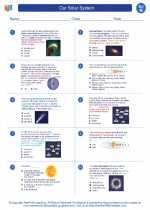Peripheral Nervous System
The peripheral nervous system (PNS) is a complex network of nerves and ganglia that connects the central nervous system (CNS) to the rest of the body. It is responsible for transmitting sensory information from the body to the CNS and for transmitting motor commands from the CNS to the muscles and glands.
Components of the Peripheral Nervous System
The PNS is divided into two main components: the somatic nervous system and the autonomic nervous system.
Somatic Nervous System
- The somatic nervous system is responsible for the voluntary control of skeletal muscles and for receiving sensory information from the external environment.
- It consists of sensory neurons that transmit information from the body to the CNS and motor neurons that transmit commands from the CNS to the muscles.
Autonomic Nervous System
- The autonomic nervous system is responsible for regulating involuntary bodily functions, such as heart rate, digestion, and respiratory rate.
- It is further divided into the sympathetic and parasympathetic nervous systems, which have opposing effects on bodily functions, providing a balance in the body's responses to different situations.
Functions of the Peripheral Nervous System
The PNS performs several important functions, including:
- Transmitting sensory information from the body to the CNS
- Transmitting motor commands from the CNS to the muscles and glands
- Regulating involuntary bodily functions through the autonomic nervous system
- Coordinating the body's response to internal and external stimuli
Study Guide
To study the peripheral nervous system, it's important to understand the following key points:
- Identify the main components of the PNS and their functions.
- Understand the difference between the somatic and autonomic nervous systems.
- Learn about the structure and function of sensory and motor neurons in the PNS.
- Explore the roles of the sympathetic and parasympathetic nervous systems in regulating bodily functions.
- Understand the overall role of the PNS in coordinating the body's responses to internal and external stimuli.
It's also helpful to review diagrams and illustrations of the PNS to understand how its components are connected and how they interact with the CNS.
By mastering these key points and concepts, you can develop a solid understanding of the peripheral nervous system and its crucial role in the functioning of the human body.
[Peripheral Nervous System] Related Worksheets and Study Guides:
.◂Science Worksheets and Study Guides Eighth Grade. Our Solar System

 Worksheet/Answer key
Worksheet/Answer key
 Worksheet/Answer key
Worksheet/Answer key
